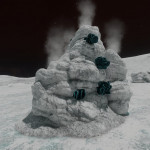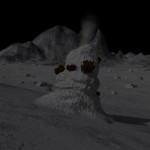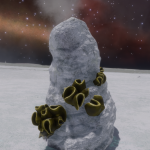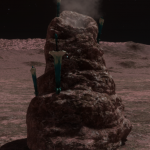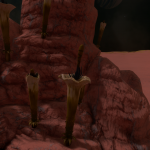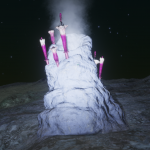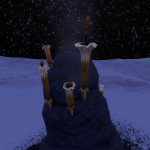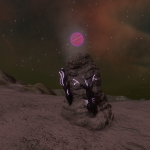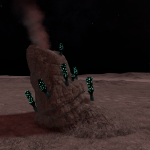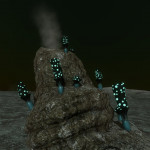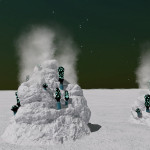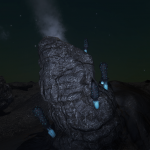Fumerola genus
Description
Extremophile organisms located in regions with active fumaroles. Their metabolism is driven exclusively through chemosynthetic and thermosynthetic mechanisms based on nearby volcanic activity. Proximity to volcanic heat allows them to survive in environments where the ambient temperature is naturally too cold for them. They frequently incorporate minerals from the fumaroles’ ejecta, meaning they can appear inorganic at first glance and may sport exotic colours.
Minimum distance between two genetic samples: 100 m
Conditions of occurrence
- Planets with thin atmosphere
- Develop on fumaroles (geological POI)
- Maximum gravity: 0.27
| Type of volcanism | Species |
|---|---|
| Water based (planètes Icy ou Rocky Ice) | Fumerola aquatis |
| Carbon dioxide or Methane (Icy or Rocky Ice planets) | Fumerola carbosis |
| Silicate, Iron or Rocky (Rocky or HMC planets) | Fumerola extremus |
| Nitrogen or Ammonia (planètes Icy ou Rocky Ice) | Fumerola nitris |
Fumerola aquatis
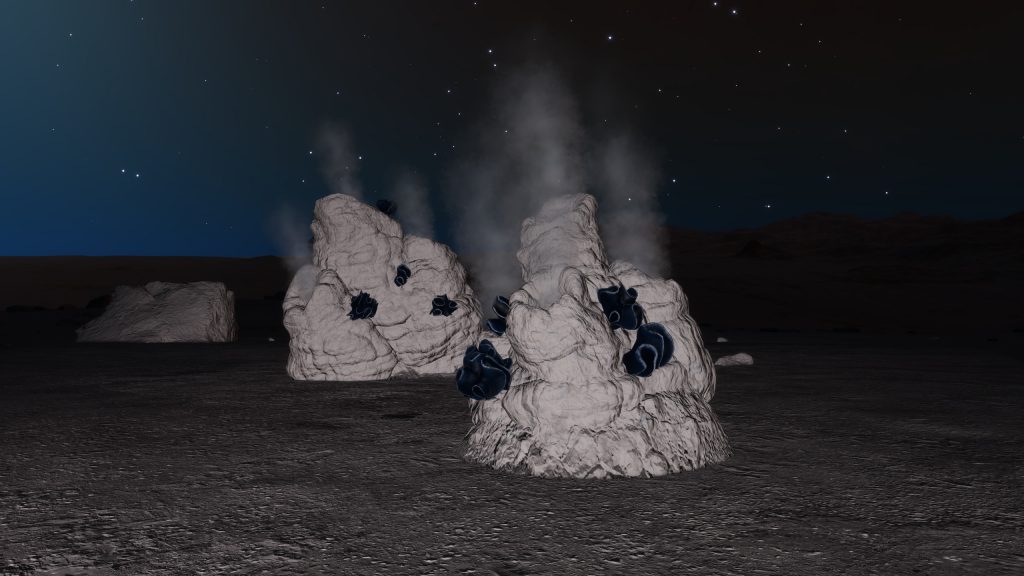
Description
A species of fumerola that can be found near sites of water-based volcanic activity. They appear as small dark clusters with ridged folds that trap heat within.
Conditions of occurrence
- Planets with thin atmosphere
- Develop on fumaroles (geological POI)
- Water based volcanism, only on Icy or Rocky Ice planets
- Maximum gravity: 0.27
Colored variants
Colored variant determined by rare material found on planet:
| Material | Color |
|---|---|
| Cadmium | Green |
| Mercury | Yellow |
| Molybdenum | Cyan |
| Niobium | Gold |
| Tungsten | Cobalt |
| Tin | Orange |
Fumerola carbosis
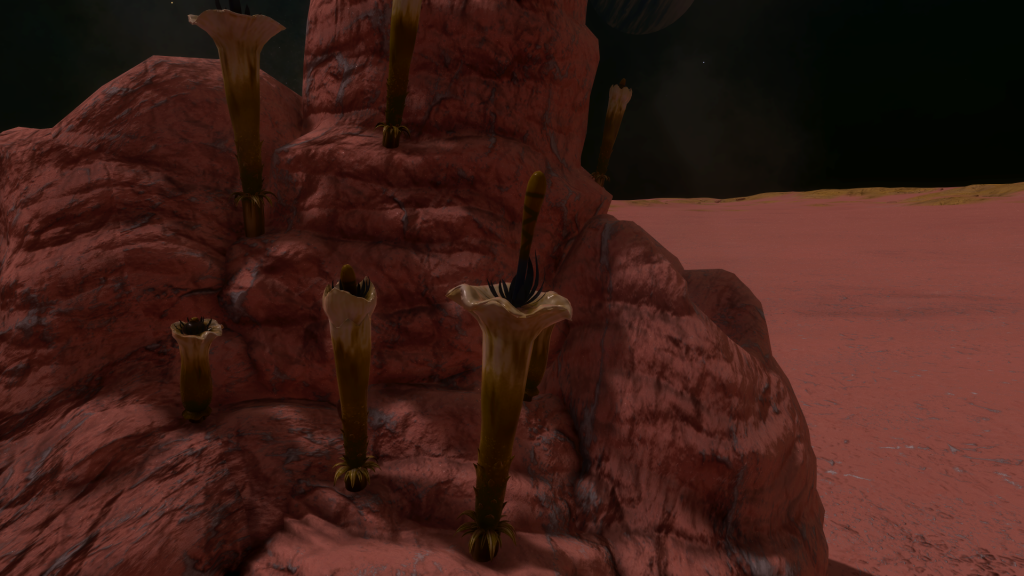
Description
A fumerola species found near sites of carbon—based volcanism, appearing as a thin upright tube. An inner organism protrudes from an opening at its peak to increase heat absorption.
Conditions of occurrence
- Planets with thin atmosphere
- Develop on fumaroles (geological POI)
- Carbon or Methane based volcanism, only on Icy or Rocky Ice planets
- Maximum gravity: 0.27
Colored variants
Colored variant determined by rare material found on planet:
| Material | Color |
|---|---|
| Cadmium | Orange |
| Mercury | Magenta |
| Molybdenum | Gold |
| Niobium | Cobalt |
| Tungsten | Yellow |
| Tin | Teal |
Fumerola extremus
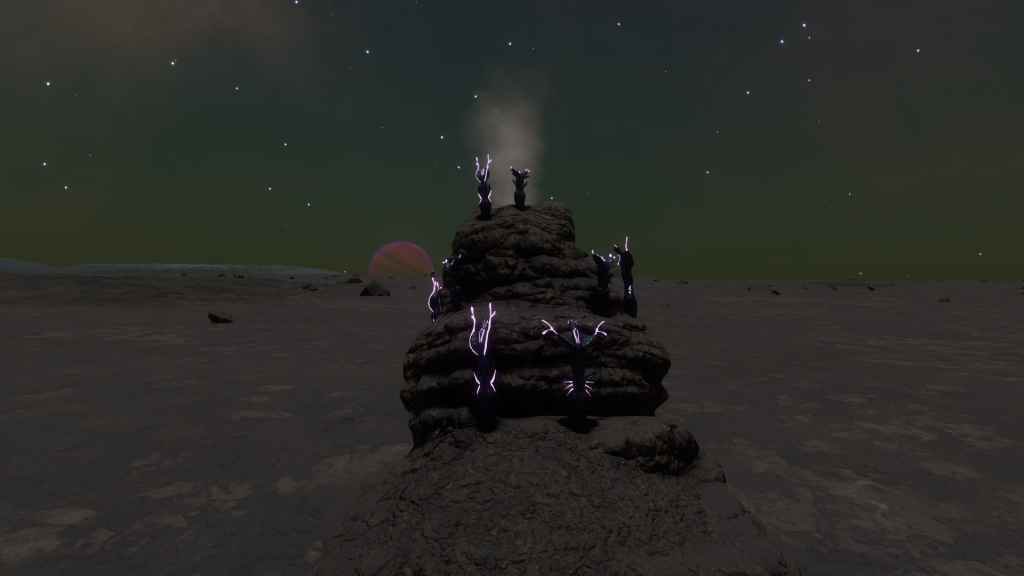
Description
An exception among its kin. this fumerola species seems to have an arbitrary preference of specific volcanism types which have yet to be explicitly linked in any way. They appear as long vertical stalks with smaller fronds that can stretch out.
Conditions of occurrence
- Planets with thin atmosphere
- Develop on fumaroles (geological POI)
- Silicate, Iron or Rocky based volcanism, only on Rocky or High Metal Content planets
- Maximum gravity: 0.27
Colored variants
Colored variant determined by rare material found on planet:
| Material | Color |
|---|---|
| Cadmium | |
| Mercury | Lime |
| Molybdenum | Blue |
| Niobium | White |
| Tungsten | Mulberry |
| Tin | Peach |
Fumerola nitris

Description
This species of fumerola prefers nitrogen-based volcanism. They produce an ovoid organism with dotted markings, which sits on top of a thin stalk.
Conditions of occurrence
- Planets with thin atmosphere
- Develop on fumaroles (geological POI)
- Nitrogen or Ammonia based volcanism, only on Icy or Rocky Ice planets
- Maximum gravity: 0.27
Colored variants
Colored variant determined by rare material found on planet:
| Material | Color |
|---|---|
| Cadmium | White |
| Mercury | Peach |
| Molybdenum | Lime |
| Niobium | Red |
| Tungsten | Aquamarine |
| Tin | Mulberry |
